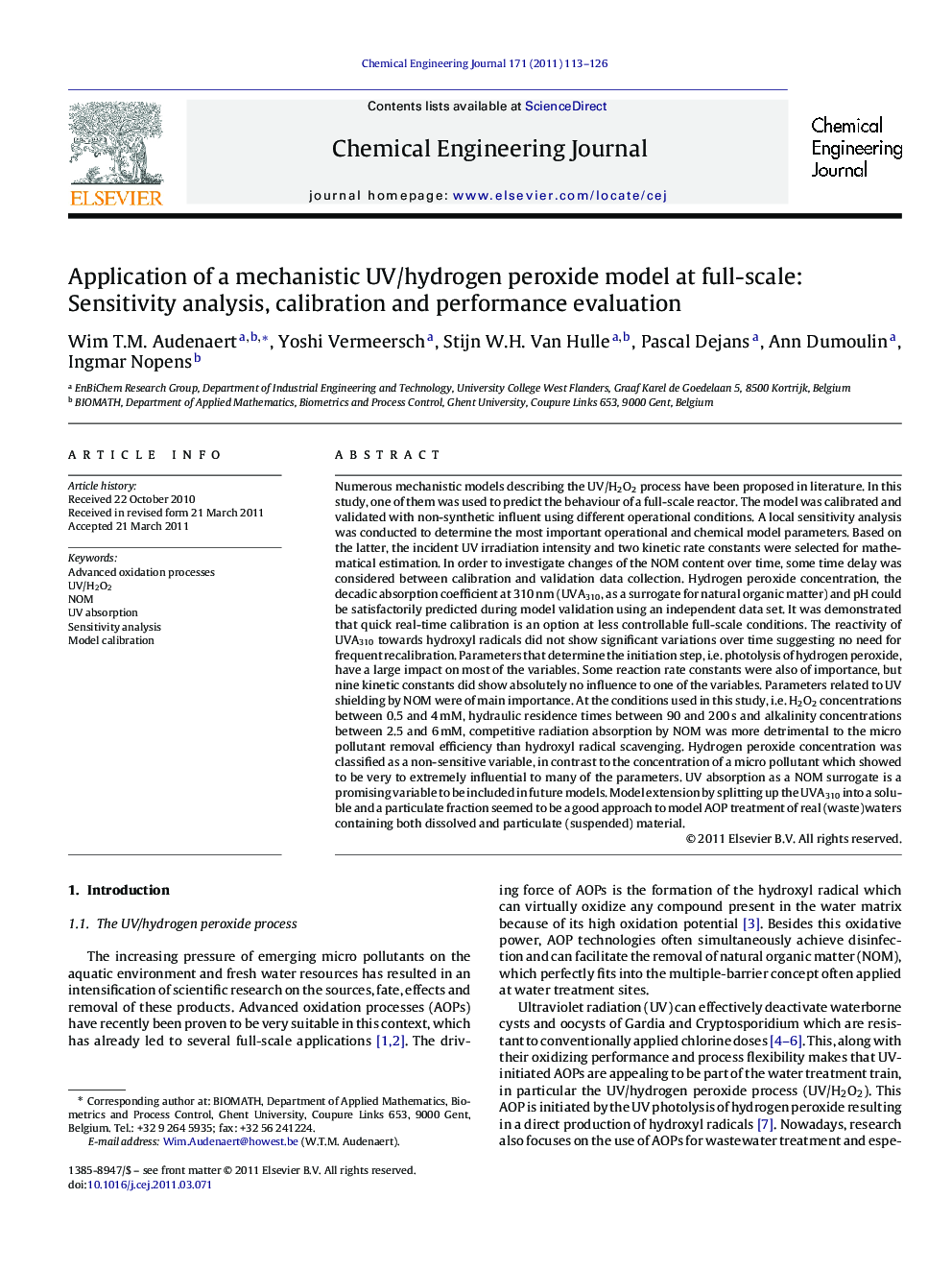| کد مقاله | کد نشریه | سال انتشار | مقاله انگلیسی | نسخه تمام متن |
|---|---|---|---|---|
| 150835 | 456458 | 2011 | 14 صفحه PDF | دانلود رایگان |

Numerous mechanistic models describing the UV/H2O2 process have been proposed in literature. In this study, one of them was used to predict the behaviour of a full-scale reactor. The model was calibrated and validated with non-synthetic influent using different operational conditions. A local sensitivity analysis was conducted to determine the most important operational and chemical model parameters. Based on the latter, the incident UV irradiation intensity and two kinetic rate constants were selected for mathematical estimation. In order to investigate changes of the NOM content over time, some time delay was considered between calibration and validation data collection. Hydrogen peroxide concentration, the decadic absorption coefficient at 310 nm (UVA310, as a surrogate for natural organic matter) and pH could be satisfactorily predicted during model validation using an independent data set. It was demonstrated that quick real-time calibration is an option at less controllable full-scale conditions. The reactivity of UVA310 towards hydroxyl radicals did not show significant variations over time suggesting no need for frequent recalibration. Parameters that determine the initiation step, i.e. photolysis of hydrogen peroxide, have a large impact on most of the variables. Some reaction rate constants were also of importance, but nine kinetic constants did show absolutely no influence to one of the variables. Parameters related to UV shielding by NOM were of main importance. At the conditions used in this study, i.e. H2O2 concentrations between 0.5 and 4 mM, hydraulic residence times between 90 and 200 s and alkalinity concentrations between 2.5 and 6 mM, competitive radiation absorption by NOM was more detrimental to the micro pollutant removal efficiency than hydroxyl radical scavenging. Hydrogen peroxide concentration was classified as a non-sensitive variable, in contrast to the concentration of a micro pollutant which showed to be very to extremely influential to many of the parameters. UV absorption as a NOM surrogate is a promising variable to be included in future models. Model extension by splitting up the UVA310 into a soluble and a particulate fraction seemed to be a good approach to model AOP treatment of real (waste)waters containing both dissolved and particulate (suspended) material.
Journal: Chemical Engineering Journal - Volume 171, Issue 1, 15 June 2011, Pages 113–126